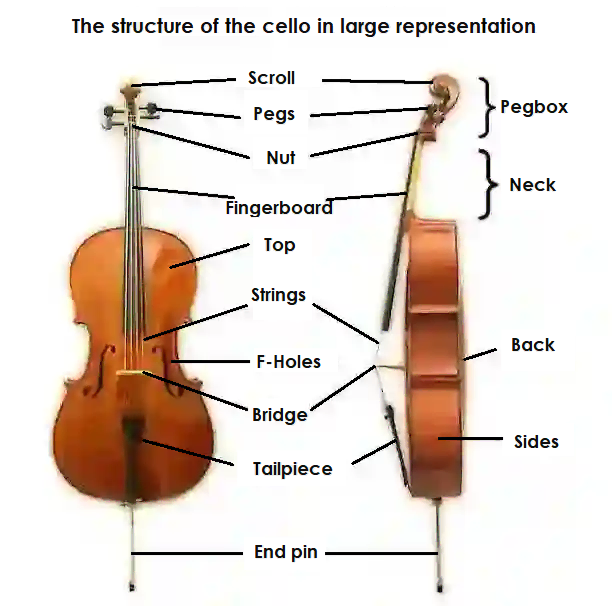Construction and function of the Cello - Philipp Dangas
Construction and function of the Cello
The cello basically has the same structure as the violin, with the peculiarity of larger dimensions due to its lower pitch. Its total length from the scroll to the bottom of the body is 1.25 m, slightly more than double the violin's corresponding length (60 cm). Since the cello is tuned a twelfth below the violin, it is not ideally proportioned like the violin in this respect. This disadvantage is offset by the fact that the sides of the cello are almost three times as high as those of the violin and the bridge of the cello has a proportionate height as the bridge of the violin.
The acoustic structure of the cello is therefore just as perfect as that of the violin. When playing, the cello is held free-standing almost vertically between the knees, supported on the floor by a "pin". The neck is shortened in relation to that of the violin and the fretboard accordingly runs further down the body towards the bridge.
The stringing consists of 4 strings and the bow is somewhat shorter than the violin bow, but stronger than the latter. In its outer form it resembles the violin bow. The mute is also used in the same way as in the violin. The two lowest strings are wound.
[Download Size: 768 Kilobytes]
Table summary of the components of the strings
The table shows the components of the strings briefly described. But only the basic components will be covered. The saddle. The fretboard, strings and bridge.

Internal search function
| Name | Value | Delete |
|---|